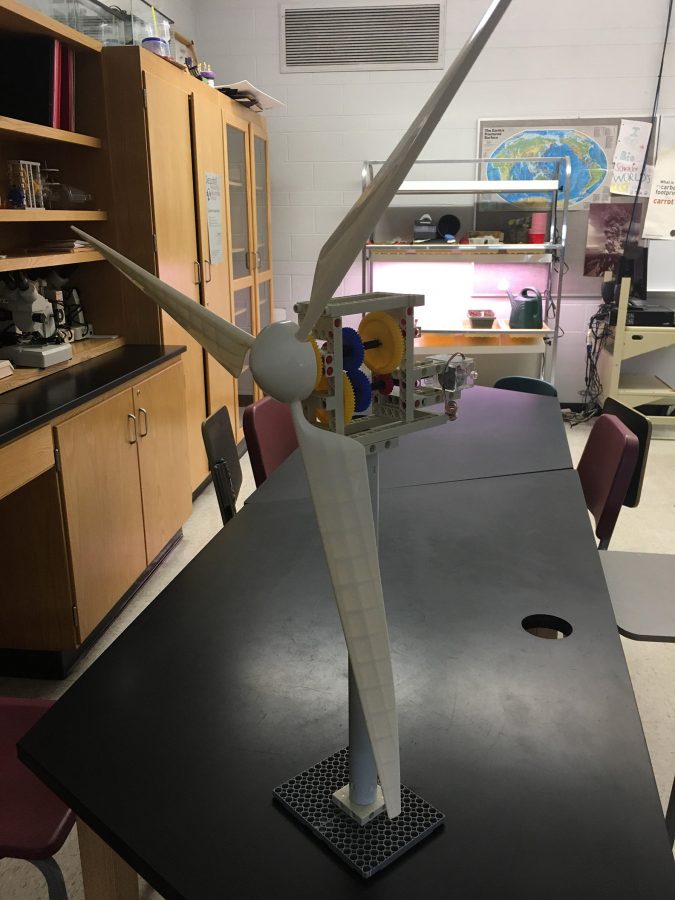What To Know About Wind Power
When other energy resources are used up, wind will continue to power the nation.
More stories from Natasha Reid
A model wind turbine made partly from Legos by a previous student of science teacher Tony Losinger.
Wind is a type of solar energy and is a result of the uneven heating of the atmosphere by the sun, the earth’s surface and the rotation of earth. Wind power is the process of wind being used to generate electricity.
Wind turbines turn the kinetic energy from the wind into power. To gather electricity, the wind the turbines are connected to a generator. The generator uses a turning shaft to rotate a rotor which has oppositely charged magnets and is surrounded by copper wire.
Wind turbines are available in a variety of power ratings, depending on size. The largest turbine stands 20 building stories high, has blades that span more than the length of a football field and produces enough electricity to power 1,400 homes. The small turbines are below 50 kilowatts and are used for homes, telecommunications dishes or water pumping.
The modern wind turbine is much easier on the eye than the old chunky windmill from years ago. With a new function in mind, the wind turbines of today are sleek and classy, as each one is customizable by size and blades. Modern wind turbines fall into two basic groups: the horizontal-axis variety and the vertical-axis design. Horizontal-axis wind turbines typically either have two or three blades. These three-bladed wind turbines are operated by an upwind motion, with the blades facing into the wind.
Wind energy is a free, renewable resource, so no matter how much is used today, there will still be the same supply in the future. Wind energy is also a source of clean, non-polluting electricity. Unlike conventional power plants, wind plants emit no air pollutants or greenhouse gases.
Wind energy has seen a large potential in the last few years and there is no doubt that more investments will be made in renewable resources for energy in the upcoming years to fulfill the ever-increasing demand for power.

